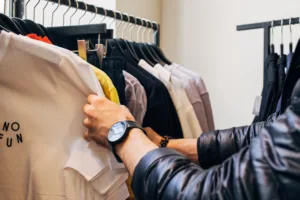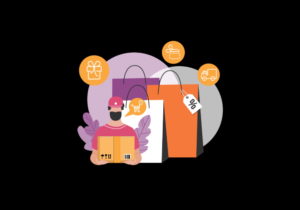Amid the cost of living crisis, over 90% of consumers say they have been impacted by rising costs. Retailers are rightly working hard to adjust and understand how this uncertain environment might impact purchasing behaviour in the run-up to Christmas. Clearly, UK shoppers are being savvier. As a result, during the vital pre-holiday period two-thirds of consumers are waiting until Black Friday and Cyber Monday (BFCM) to make certain purchases.
Black Friday, love it or loathe it, has turned into a month-long affair of high-intensity price wars and relentless online and in-person discounts. While BFCM represents a fantastic opportunity for brands, in today’s climate it requires an increasingly nuanced approach.
Here, Charlie Casey, CEO of LoyaltyLion, delves into their recent research which surveyed UK consumers to understand their Black Friday wish list from brands; what drives them to buy, and what just drives them away?
The value of time-limited discounts
Ecommerce stores often harbour a ‘bigger equals better’ mentality when it comes to BFCM. What this means is shoppers enduring weeks of Black Friday bombardment. But the truth is, they don’t like the increasingly drawn-out BFCM rigmarole; over four in ten say they want a sale to start 1-6 days before BFCM, while 26% say they would prefer sales to last for just the BFCM weekend.
Sales fatigue leads customers to question the real value they’re receiving. Less really is more, with data suggesting that under a week is the optimum length of a BFCM sale. Keeping the window shorter provides greater impetus to purchase while also enabling brands the space to offer other creative, targeted sales promotions down the line.
Avoid BFCM messaging fatigue
The preferred communication method for BFCM is email, but the last thing retailers want to do is use Black Friday to give consumers a reason to unsubscribe. Shoppers will be receiving emails from a number of brands. Being hit repeatedly with marketing messages during the BFCM period means retailers must differentiate.
Personalisation is the primary way to achieve this. Nearly seven in ten consumers are more likely to buy if they get personalised promotions or offers. At the same time, personalisation data can also be used to make product recommendations based on previous buying behaviour. Demonstrating to customers that they are understood and valued individually is crucial.
Following emails, social still remains a core channel for customers to stay updated on sales news. However, brands must choose the platform carefully. For example, only 29% want to hear about sales through Instagram ads. It might be worth focusing on higher intent campaigns, for example, Google Shopping Ads, which only display adverts to consumers when they search for the product in question.
Also, make sure online and offline are working together. Consistency is key. Over 70% of consumers say it’s important that stores run the same promotions online and in-store. Tying together omnichannel promotions will ensure all customers feel valued, no matter their preferences.
Incentives that work time and again
Of course, customers will always appreciate a discount. But with so much competition, incentives must go further unless brands want to engage in an unwinnable race to the bottom. Consider alternative incentives beyond price drops. For example, over three-quarters of consumers said that early access to sales would make them more likely to buy something this BFCM.
Even more say that free gifts with items would trigger a purchase, making this more of an incentive than a discount. Notably, 80% say free or discounted shipping would make them more likely to purchase! It shows that the perception of added value, not just lower cost, can make all the difference.
Posting a good return
Three-quarters of shoppers say next-day delivery would have a positive impact on their likelihood of making a purchase, however – perhaps surprisingly – 75% say quick delivery (within a week) would also suffice. This allows brands to offer next-day delivery as a further incentive for loyal customers. Retailers can also use loyalty program tiers to reward top-tier members with premium returns options – like free return pick up.
In fact, the issue of returns continues to challenge retailers but also continues to be a point of differentiation for customers. 77% say free returns are important, but at the same time, they want clarity. Too often returns processes are overly complex or unclear. Seven in ten shoppers say that clear instructions regarding returns would positively impact their purchase likelihood.
A smooth delivery and returns process can differentiate service and be used as an incentive for a brand’s most valued customers. In the run-up to BFCM, businesses must consider how their policies stack up and whether they can amend their approach in time for the busy season.
Avoid a BFCM discount and dash; loyalty in the afterglow
In the afterglow of a BFCM purchase, customers are open to further communication from a brand, with consumers saying they would expect an email 1-3 days after the sale. Inflect this communication with personalisation and it opens another avenue for loyalty.
And loyalty should be the ultimate goal here.
Black Friday is a perfect opportunity to garner loyalty and encourage customers to act as brand advocates. Consider that following a positive Black Friday experience, 74% are likely to refer a friend or family member. More than six in ten would join a loyalty program, with the same number likely to leave a review. And, 57% would follow a brand or join a community on social media.
The right BFCM experience adds up to the perfect recipe for longer-term loyalty.
Despite the cost-of-living crisis, it’s clear that customers are looking forward to the Black Friday period, but want to spend money where they’ll get the most value and the best customer experience. This gives retailers the drive to reinvigorate their customer engagement and communications strategies. After all, the more you respond to customer needs during this challenging time, the more likely you’ll create long term loyalty; the key to driving more sustainable growth all year round.








